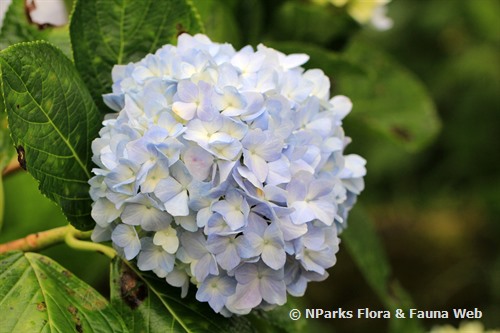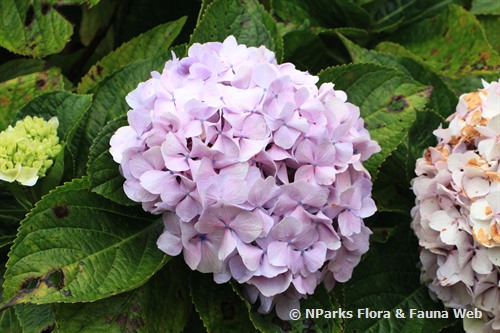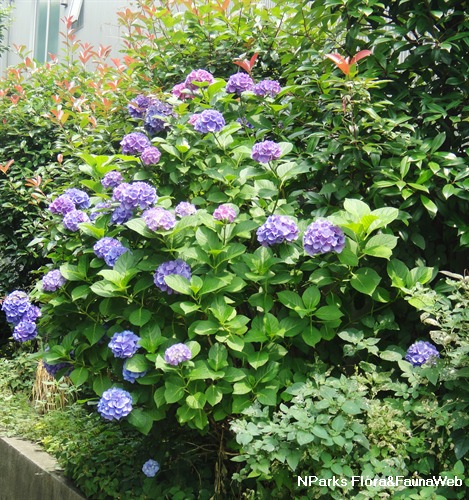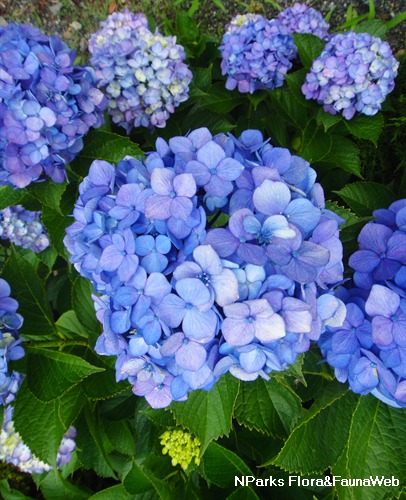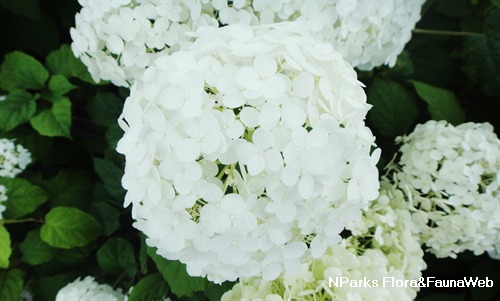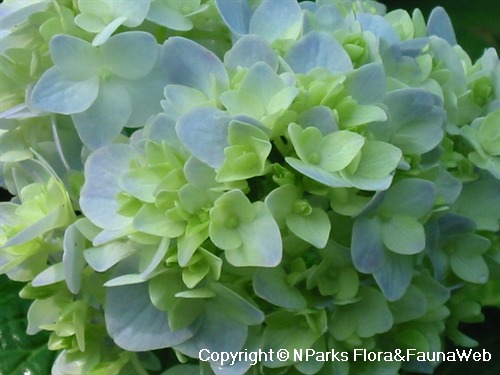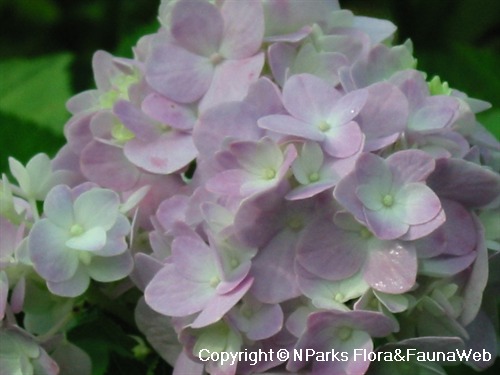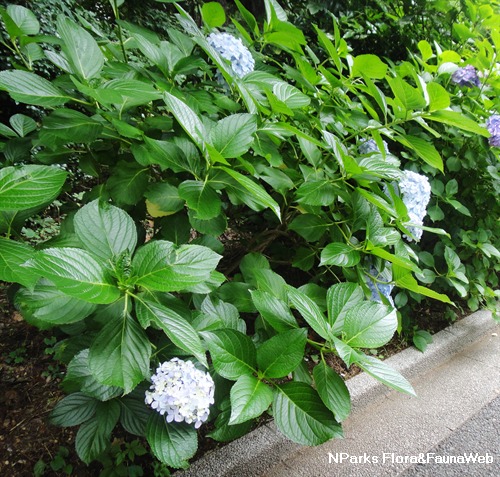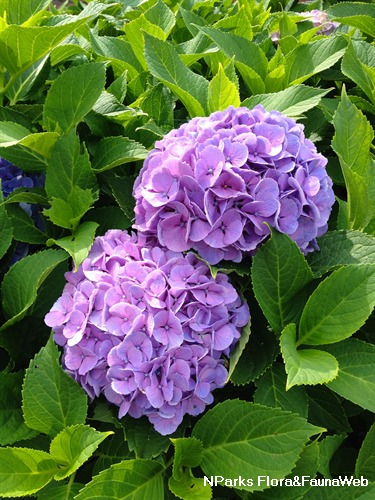
Back
Hydrangea macrophylla
| Family Name: | Hydrangeaceae |
| Common Name: | Hydrangea, Common Hydrangea, Snowball Flower, Florist's Hydrangea |
Name
Classifications and Characteristics
| Plant Division | Angiosperms (Flowering Seed Plants) (Dicotyledon) |
|---|---|
| Plant Growth Form | Shrub |
| Lifespan (in Singapore) | Perennial |
| Mode of Nutrition | Autotrophic |
| Plant Shape | Shrubby |
| Maximum Height | 1 m to 2 m |
| Maximum Plant Spread / Crown Width | 1 m to 1.5 m |
Biogeography
| Native Distribution | Eastern Asia |
|---|---|
| Native Habitat | Terrestrial |
| Preferred Climate Zone | Tropical |
Description and Ethnobotany
| Growth Form | Shrub with a rounded growth habit, able to grow up to about 1 - 2 m tall. |
|---|---|
| Foliage | Dark green leaves, obovate to elliptic, serrated margins, measuring about 10 - 20 cm long. |
| Flowers | Large corymb inflorescence of light blue flowers, consisting of small fertile florets with scattered showy sterile florets often forming a marginal ring. |
| Others - Plant Morphology | Hydrangeas are well known because the change colour according to their pH value. When the soil is acidic, the flowers are blue or dark purple in colour. When the soil is alkaline, the flowers are pink in colour and when the soil is neutral, the flowers are white or pale green in colour. |
| Etymology | Genus Hydrangea is from Greek words "hydor" which means "water" and "aggeion" which means a vessel, and it refers to the shape of the flowers. Species macrophylla means with large leaves. |
| Ethnobotanical Uses | Medicinal: In Chinese medicine, the flowers are used to treat malaria and various heart diseases. The leaves and roots have been used as an antimalarial drug. |
Landscaping Features
| Desirable Plant Features | Ornamental Flowers |
|---|---|
| Landscape Uses | Interiorscape/ Indoor Plant, Coastal, Flowerbed / Border |
Plant Care and Propagation
| Light Preference | Semi-Shade |
|---|---|
| Water Preference | Lots of Water |
| Plant Growth Rate | Moderate |
| Rootzone Tolerance | Moist Soils, Well-Drained Soils |
| Pruning | Prune after flowering |
| Diseases | It may be susceptible to leaf spot. |
| Pest(s) | Sucking Insects |
| Propagation Method | Stem Cutting (Softwood) |
Foliar
| Mature Foliage Colour(s) | Green |
|---|---|
| Foliar Type | Simple / Unifoliate |
| Foliar Attachment to Stem | Petiolate |
| Foliar Shape(s) | Non-Palm Foliage (Ovate) |
| Foliar Apex - Tip | Acute |
| Leaf Area Index (LAI) for Green Plot Ratio | 4.5 (Shrub & Groundcover - Dicot) |
Floral (Angiosperm)
| Flower & Plant Sexuality | Unisexual Flowers |
| Flower Colour(s) | Blue, Pink, Purple |
|---|---|
| Flower Grouping | Cluster / Inflorescence |
| Flowering Period | Free-Flowering |
Image Repository
Others
| Master ID | 818 |
|---|---|
| Species ID | 2113 |
| Flora Disclaimer | The information in this website has been compiled from reliable sources, such as reference works on medicinal plants. It is not a substitute for medical advice or treatment and NParks does not purport to provide any medical advice. Readers should always consult his/her physician before using or consuming a plant for medicinal purposes. |

